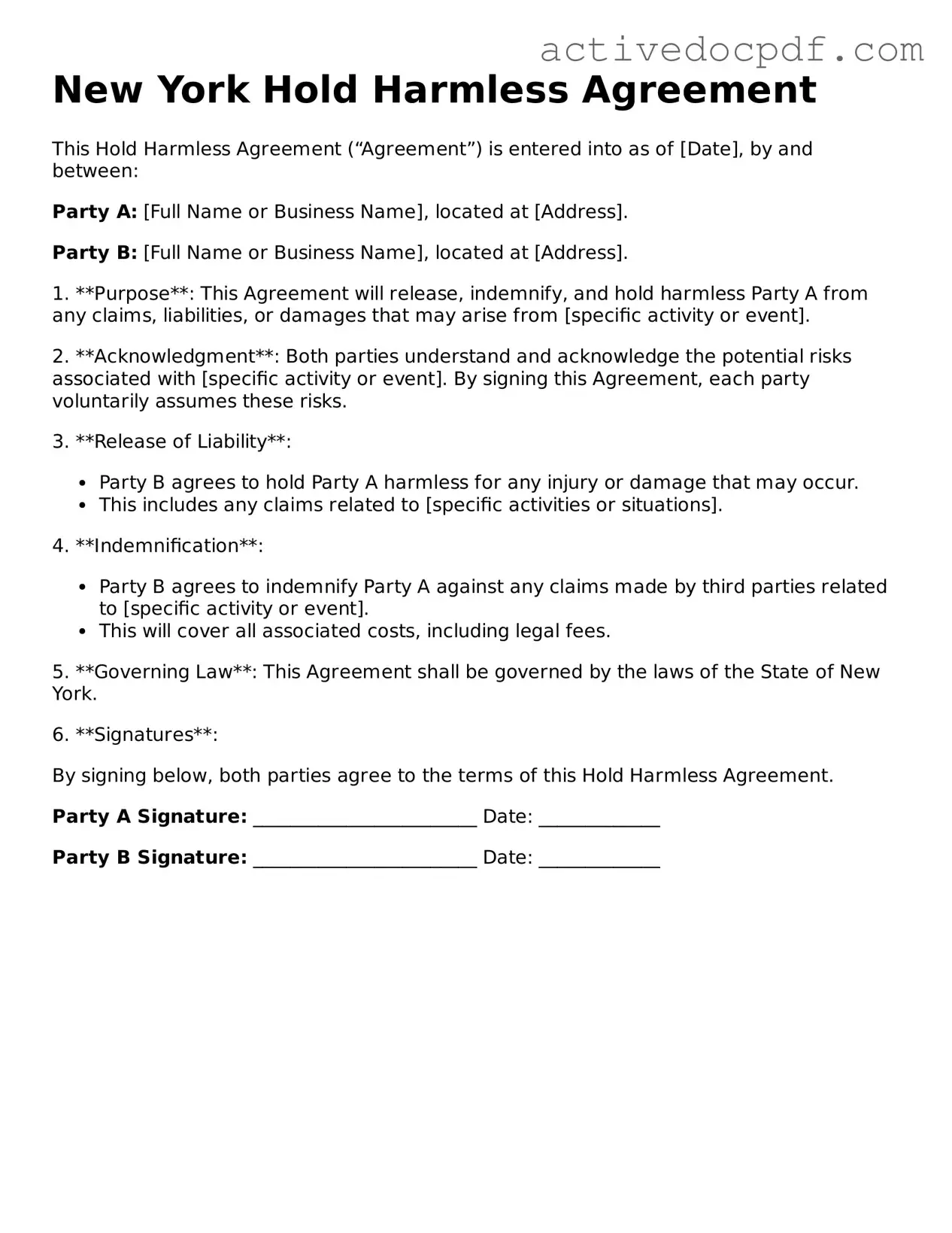What is a New York Hold Harmless Agreement?
A New York Hold Harmless Agreement is a legal document that protects one party from liability for damages or injuries that may occur during a specific event or activity. Essentially, it is an agreement where one party agrees not to hold the other party responsible for certain claims or losses.
Who typically uses a Hold Harmless Agreement?
This agreement is commonly used by businesses, contractors, event organizers, and property owners. For example, if a contractor is working on a property, the property owner may require the contractor to sign a Hold Harmless Agreement to avoid liability for any accidents that occur during the job.
What are the main components of a Hold Harmless Agreement?
A typical Hold Harmless Agreement includes the following components:
-
Parties Involved:
Clearly identifies the parties entering the agreement.
-
Scope of Agreement:
Defines the activities or events covered by the agreement.
-
Liability Waiver:
States that one party will not hold the other responsible for certain damages or injuries.
-
Indemnification Clause:
Outlines the obligation of one party to compensate the other for any losses incurred.
-
Signatures:
Requires the signatures of all parties to make the agreement legally binding.
Is a Hold Harmless Agreement legally enforceable in New York?
Yes, a Hold Harmless Agreement can be legally enforceable in New York, provided it is drafted correctly and meets certain legal standards. It is important to ensure that the language used is clear and that both parties fully understand the terms before signing.
Can a Hold Harmless Agreement protect against gross negligence?
Generally, a Hold Harmless Agreement cannot protect a party from liability resulting from gross negligence or willful misconduct. Courts often view such agreements with skepticism if they attempt to waive liability for serious misconduct.
How do I create a Hold Harmless Agreement?
Creating a Hold Harmless Agreement involves several steps:
-
Identify the parties involved.
-
Clearly outline the scope of the agreement.
-
Draft the liability waiver and indemnification clauses.
-
Review the document for clarity and completeness.
-
Have all parties sign the agreement.
Do I need a lawyer to draft a Hold Harmless Agreement?
While it is possible to draft a Hold Harmless Agreement without a lawyer, consulting with a legal professional is advisable. A lawyer can ensure that the agreement complies with New York laws and adequately protects your interests.
What happens if a party violates the Hold Harmless Agreement?
If a party violates the terms of a Hold Harmless Agreement, the other party may have grounds to pursue legal action. This could involve seeking damages for any losses incurred as a result of the violation. It’s essential to keep a copy of the signed agreement as evidence.
Are there any specific situations where a Hold Harmless Agreement is not recommended?
Yes, there are situations where a Hold Harmless Agreement may not be advisable. For example, if the activity involves inherent risks that cannot be mitigated, or if one party has significantly more power or resources than the other, it may be better to reconsider the agreement or seek alternative risk management strategies.
